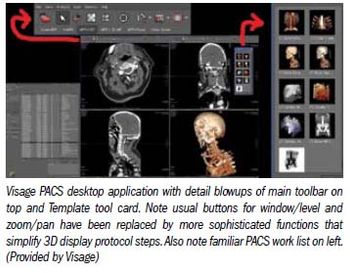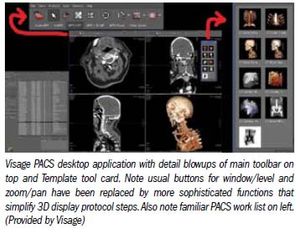
For the past 15 years, most PACS have performed the basic tasks of taking in images, archiving them, sending them to workstations for display, and hopefully not losing them.

For the past 15 years, most PACS have performed the basic tasks of taking in images, archiving them, sending them to workstations for display, and hopefully not losing them.

As display technology evolves, radiology departments are presented with a growing variety of PACS displays with increased brightness, sharper contrast, and improved calibration capability. Two developments on their way to the consumer market are likely to offer significant potential benefits for radiologic image visualization.

When PACS were first introduced, the vendor supplied the whole system, from the back-end servers to the front-end diagnostic workstations. Over time, the buyers of these systems realized that none of these PACS vendors actually manufactured the computers and monitors; they just resold them, often at huge markups.

Since the beginning of PACS, one of the main rate-limiting components of the image viewing workstation has been the central processing unit. Other parts of the computer are easy to scale up. Computer memory is cheap and plentiful.

Extending access to radiology images and reports has always been a challenge. When PACS was first introduced in the early 1990s, it required costly dedicated workstations for viewing images and reports. Even radiology information systems, in use since

Published: July 1st 2007 | Updated:

Published: February 1st 2007 | Updated:

Published: May 1st 2008 | Updated:

Published: September 16th 2004 | Updated:

Published: May 26th 2010 | Updated: